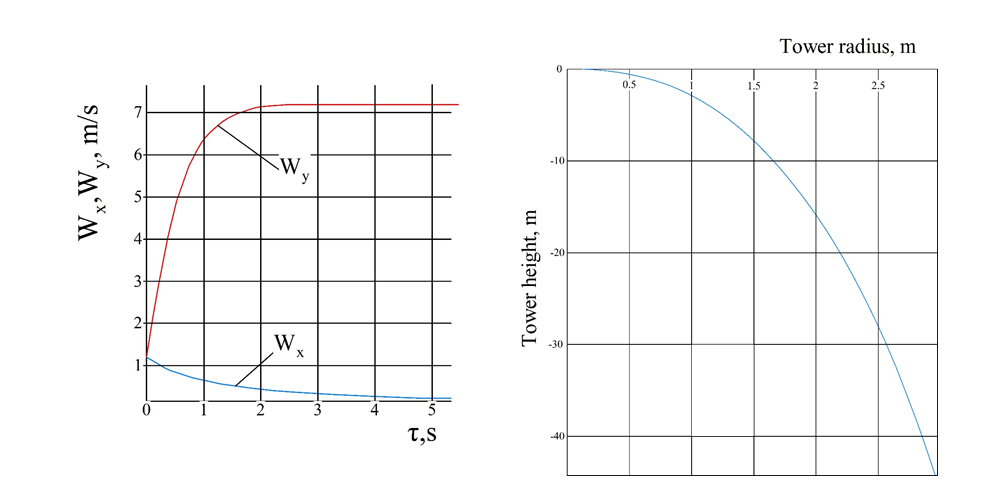Determination of the heat transfer coefficient between pellets and air during the modernization of a pelletizing tower based on industrial research
DOI:
https://doi.org/10.15587/2706-5448.2023.293264Keywords:
heat transfer coefficient, granulator tower, pellets quality control, heat transfer process efficiency, granulatorAbstract
The object of research is the heat transfer coefficient between pellets and air flow in industrial granulation towers. The problem lies in the difficulty of optimizing the heat transfer process. As a result of experiments and analysis, it was shown that each granulating tower for the production of mineral fertilizers has unique properties that significantly affect the efficiency of heat transfer. There are general mathematical models, but for accurate modeling and optimization of heat transfer, the unique characteristics of each production must be taken into account. The results showed that creating an accurate mathematical model for each specific fertilizer production is a difficult task due to the large number of unmeasured or difficult to reconcile factors.
The method of calculating the heat transfer coefficient for the granulator tower obtained in the course of the work derives from a set of researches on the production of mineral fertilizers. This approach is based on the analysis of technical parameters and granulation composition of the product. The developed method makes it possible to reliably ensure the operating conditions of the device during modernization and changes in production volumes. These results are important for both practical and theoretical purposes. They can be used to accurately predict the operating conditions of equipment during modification and productivity growth. According to the research results, this approach allows obtaining fairly reliable data for forecasting the thermodynamic conditions of the tower equipment in the event of its modernization and transition of the granulation tower to the production of an increased amount of products. The specified method was tested in calculations of production modernization at urea production plants (Indian Farmers Fertilizer Cooperative (Iffco), India), Rustavi Azot LLC (Georgia), Grodno Azot LLC (Republic of Belarus) and others. This method has proven to be quite reliable in predicting the possible need for an additional amount of air supplied to the tower and forming requirements for the operating parameters of rotary vibrating granulators in the event of a significant increase in the load on the float in the tower and an increase in the amount of products planned for release.
References
- World Fertilizer Trends and Outlook to 2018 (2015). Food and Agriculture Organization of the United Nations. Rome: FAO, 66.
- Kazakova, Ye. A. (1973). Granulirovanie i okhlazhdenie v aparatakh s kipiashchim sloem. Moscow: Khіmіia, 152.
- Yurchenko, O., Sklabinskyi, V., Ochowiak, M., Ostroha, R., Gusak, O. (2022). Rational Choice of a Basket for the Rotational Vibropriller. Journal of Engineering Sciences, 9 (1), F16–F20. doi: https://doi.org/10.21272/jes.2022.9(1).f3
- Strunga, A., Kroulíková, T., Bartuli, E., Raudenský, M. (2022). Experimental determination of the heat transfer coefficients of shell-and-tube heat exchangers with different hollow fiber arrangements. Journal of Thermal Analysis and Calorimetry, 147 (24), 14787–14796. doi: https://doi.org/10.1007/s10973-022-11576-1
- Islamova, A. (2018). Experimental determination of the heat transfer coefficient during evaporation and boiling of thin liquid film. MATEC Web of Conferences, 194, 01022. doi: https://doi.org/10.1051/matecconf/201819401022
- Vossel, T., Wolff, N., Pustal, B., Bührig-Polaczek, A., Ahmadein, M. (2021). Heat Transfer Coefficient Determination in a Gravity Die Casting Process with Local Air Gap Formation and Contact Pressure Using Experimental Evaluation and Numerical Simulation. International Journal of Metalcasting, 16 (2), 595–612. doi: https://doi.org/10.1007/s40962-021-00663-y
- Moreira, T. A., Colmanetti, A. R. A., Tibiriçá, C. B. (2019). Heat transfer coefficient: a review of measurement techniques. Journal of the Brazilian Society of Mechanical Sciences and Engineering, 41 (6). doi: https://doi.org/10.1007/s40430-019-1763-2
- Wu, C., Xu, W., Wan, S., Luo, C., Lin, Z., Jiang, X. (2022). Determination of Heat Transfer Coefficient by Inverse Analyzing for Selective Laser Melting (SLM) of AlSi10Mg. Crystals, 12 (9), 1309. doi: https://doi.org/10.3390/cryst12091309
- Petrich, C., Arntsen, M., Dayan, H., Nilsen, R. (2013). Heat Transfer in a Bed of Dry Iron Ore Pellets. ISIJ International, 53 (4), 723–725. doi: https://doi.org/10.2355/isijinternational.53.723
- Chung, C.-H., Yang, K.-S., Chien, K.-H., Jeng, M.-S., Lee, M.-T. (2014). Heat Transfer Characteristics in High Power LED Packaging. Smart Science, 2 (1), 1–6. doi: https://doi.org/10.1080/23080477.2014.11665596

Downloads
Published
How to Cite
Issue
Section
License
Copyright (c) 2023 Kostiantyn Nichvolodin , Vsevolod Sklabinskyi

This work is licensed under a Creative Commons Attribution 4.0 International License.
The consolidation and conditions for the transfer of copyright (identification of authorship) is carried out in the License Agreement. In particular, the authors reserve the right to the authorship of their manuscript and transfer the first publication of this work to the journal under the terms of the Creative Commons CC BY license. At the same time, they have the right to conclude on their own additional agreements concerning the non-exclusive distribution of the work in the form in which it was published by this journal, but provided that the link to the first publication of the article in this journal is preserved.







